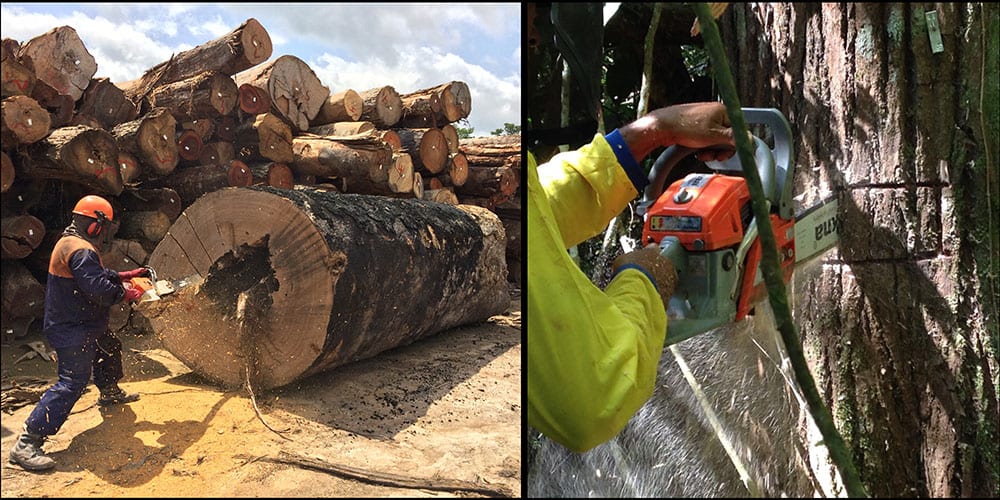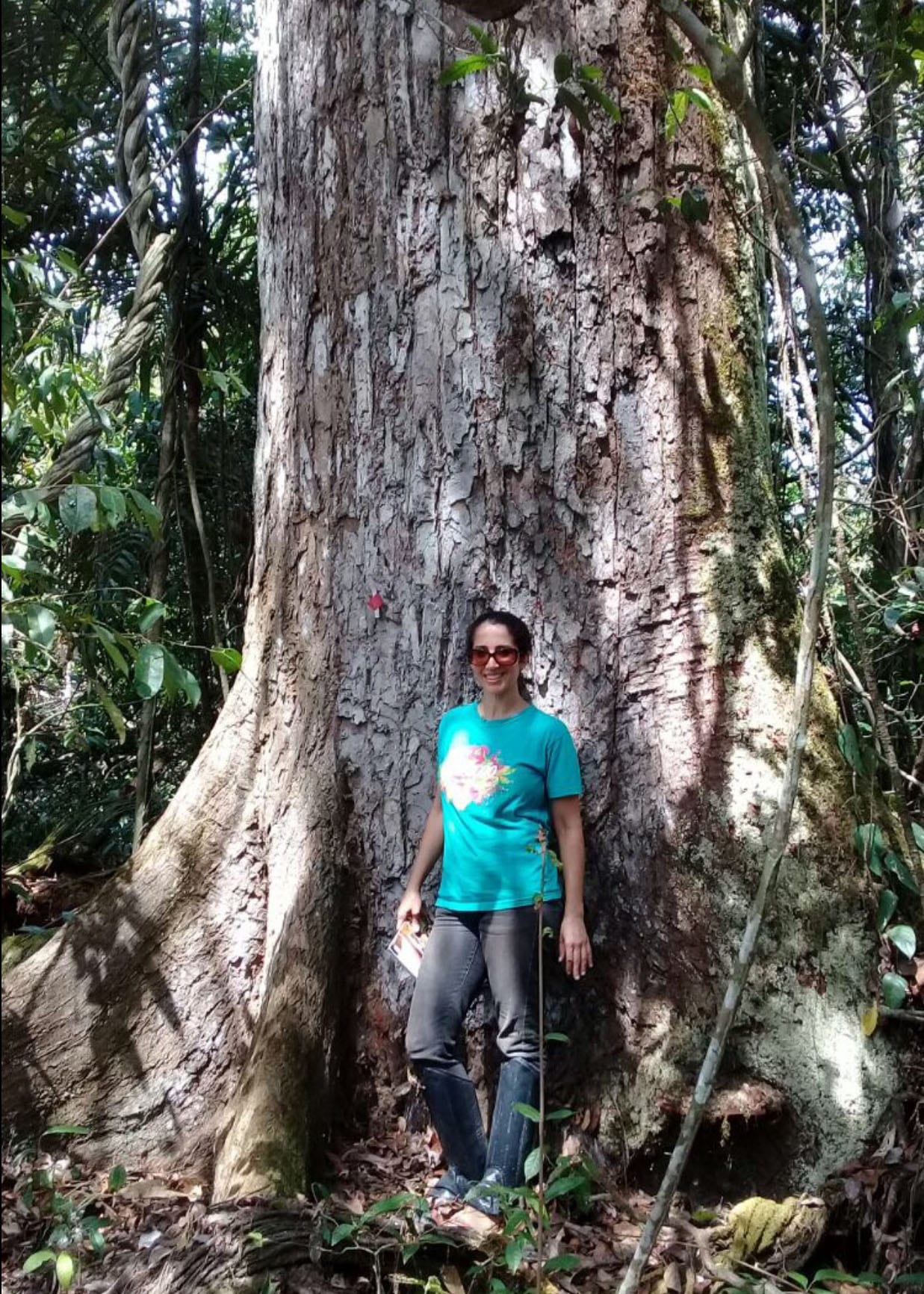Reading the Rainforest: The Amazon’s Past Climate Points to its Future

The Amazon rainforest near Rio Xingu in western Brazil. Photo provided.
The Amazon Basin is one of the most important ecosystems on earth, and studying this region provides important information about our world and the changes it faces. Weather in this vast drainage area affects the climate around the world as warm, moist air rises from the forests, mixes with cooler air and returns as prodigious rain in a cycle that helps drive atmospheric circulation. It is also fantastically biodiverse, home to 10 percent of the world’s known species of plants and animals. There are an estimated 16,000 species of trees throughout the Amazon Basin, some of which exist only in a single small plot and nowhere else on Earth.
For an ecosystem of such significance, climate records are frustratingly inadequate. In the entire Amazon Basin, an area roughly the size of the continental United States, there are only eight instrumental rainfall stations with records longer than 80 years. The oldest record, from the western Amazon, dates to 1892.
The lack of data makes it impossible to put modern weather patterns into perspective. The instrumental record from the last 30 years shows increasing climate variability, more floods and more droughts; two of the area’s most severe droughts in the history of weather record keeping happened in 2005 and 2010, while another part of the Amazon basin saw record floods in 2012. Without a more comprehensive picture of long-term weather patterns, it’s impossible to know if this kind of variability is out of the ordinary.
Data in Wood
Dave Stahle, Distinguished Professor of geosciences at the University of Arkansas, is working to answer those questions by building long-term climate records in the Amazon Basin from tree-ring samples. The science is called dendrochronology, and it’s a highly accurate way to extend instrument records by hundreds of years.
“It is a slick dating method that we use to determine the age of ancient archeological sites, or early historic buildings, or living trees” said Stahle. “We are actually using the imprint of climate variability on the width of the annual growth rings. We can compare, synchronize, and exactly date ring width time series because tree growth is influenced by the sequence of wet years and dry years.”

Researchers obtained tree samples from sustainable logging operations. Loggers cut whole slices (left) or made plunge cuts for smaller pieces.
Dendrochronology is established science in the mid latitudes where many species of trees go dormant in the winter, creating pronounced growth rings. It’s a different story in the tropics, however, where the temperature varies little from month-to-month and the main difference between seasons is the amount of rainfall.
Species With a History
With a three-year, $418,000 grant from the National Science Foundation, Stahle and a team of researchers from the United States and Brazil focused on the eastern equatorial region of the Amazon Basin, near the Rio Paru, to study cedrela trees. Cedrela is an ideal tropical species for the study, Stahle said, because it produces annual growth rings that vary with moisture conditions. Wide rings are produced in wet years and narrow rings in drought years.
Right now we have two long tree-ring chronologies and we need maybe 2,000. But this is a start and knowing the history of tree growth for the past 250-years should make it easier to build additional tree-ring chronologies in the Amazon.
At mid-latitudes, Stahle can gather the data he needs with a non-destructive core sample, taken by drilling into a tree with a small hand auger. However, the annual growth rings in tropical cedrela trees are usually not clear enough to be identified on a narrow core sample. Instead, Stahle gathered cross sections of trees cut at legal, sustainable logging operations.
After collecting, polishing and analyzing hundreds of cedrela cross sections, Stahle’s team created the first exactly dated and replicated ring-width chronology in the eastern equatorial Amazon, extending the climate-variability timeline of the region to 1786. They published a similar study for headwaters of the Madeira River in the southern Amazon Basin, but the two study areas are separated by 1,200 miles and more chronologies will be needed to reconstruct climate history for this vast area.
Most tropical trees do not form useful annual rings, Stahle explains, so finding a species that does was a challenge.

Brazilian researcher Daniela Granato-Souza stands near a cedrela odorata.
Stahle found evidence of year-to-year drought and flood conditions, and a decade-long drought in the mid-19th century. In other words, climate extremes have occurred under natural conditions prior to the industrial revolution and will likely recur regardless of human activity. That’s important data, but it’s too early to tell if the warming climate is causing weather in the Amazon Basin to get wilder, or if periodic and sometimes severe droughts and floods are the norm. The tree ring record of climate will have to be much more complete to make that call, Stahle said.
“The drainage basin of the Amazon River is almost the size of the continental United States. For the continental United States, we have on the order of 2,000 tree ring chronologies that scientists have developed over the last 100 years of tree-ring research. Those provide pretty fair coverage of the temporal and spatial variability of moisture in the United States. We need something like that for the lowland Amazon as well. Right now we have two long tree-ring chronologies and we need maybe 2,000. But this is a start and knowing the history of tree growth for the past 250-years should make it easier to build additional tree-ring chronologies in the Amazon.”



